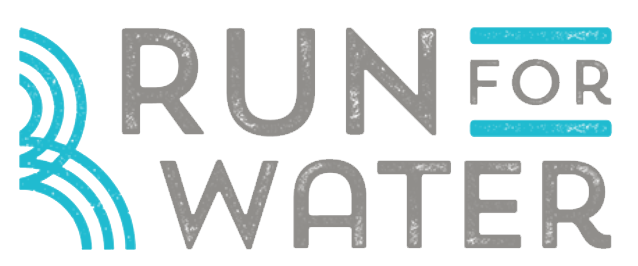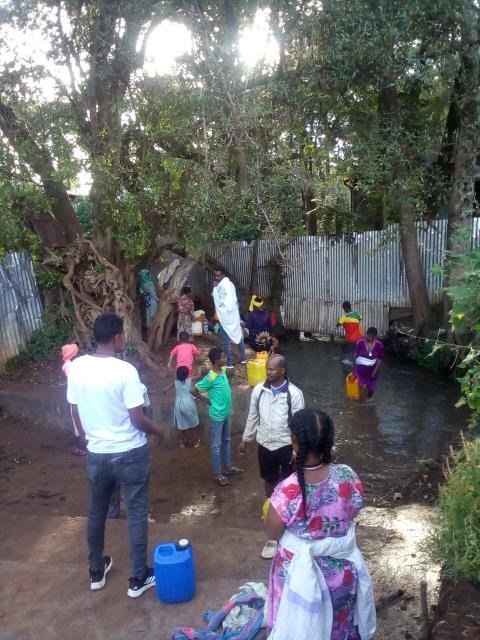
ETHIOPIA
OUR PARTNER COMMUNITIES
MERAWI
Population: 99,661
This year, we're coming together to raise $300K for Merawi, Ethiopia!
Merawi is facing a critical water shortage that’s only getting worse as the population grows.
Today, only 22.5% of Merawi’s residents have reliable access to clean water. The rest rely on unsafe sources like the one pictured — putting their health at risk every day.
But together, we can change that.
In 2025, Run For Water is partnering with the community of Merawi to install a solar-powered well and rehabilitate two existing wells.
Your support will create lasting change for families:
Sustainable water sources for the community
Reduce waterborne disease
Free up hours of walking for water
Protect women and girls who currently walk long distances to collect unsafe water
Improve health, education, and daily life
Just $7.81 brings clean water to one person.
How many lives will you change today?
2025
Pictured: A water source in Merawi, Ethiopia. Currently, 77.5% of the population relies on water sources like this, lacking access to safe, clean water.
Liben
& Kuala Baka
Population: 3,220
One well was drilled in each community, providing access to clean water for both. The communities also established a committee to manage the wells and received water education and training from well-building experts, so they can maintain the wells for many years to come.
2024
Jahana
One freshwater well was drilled, providing the entire village with fresh water!
Previously, this community had shared a contaminated groundwater source with cattle and other animals.
A clean water source is eliminating preventable waterbourne diseases. When families are healthy, they continue to work and kids stay in school instead of caregiving for sick family members.
2023
SIZI
Population: 75,000
Three villages installed clean water systems, replacing their contaminated ground water source! These water sources will help the community survive dry seasons.
Clean water, along with the health center and ongoing health education, equals better health outcomes, particularly for women and children.
2022
HAWO
Population: 5,700
Four clean water sources were built closer to home, giving some residents access to clean water for the first time in their lives.
Rather than missing school and walking together to fetch water in the nearby river, kids in Hawo can attend full days of school with a water source close to their classroom.
2021
BULUK
Population: 15,000
Buluk is located in the Harana Buluk area of Oromia.
Young leaders in Buluk have been mobilizing their community to fundraise 10% of the project cost.
This means, at the end of 2020, girls and women in Buluk will no longer have to go on very long and laborious daily journeys in search of contaminated water. With access to safe, clean, drinking water, kids can go to school, mothers can start businesses, fathers can water their crops, and children no longer die of waterborne diseases.
2020
FRESIWEAT
Population: 4,750
This community is located in the Emba Alaje district of Southern Tigray. Like in all other rural communities in Ethiopia, the responsibility of fetching water is primarily placed on girls and women. It was an extremely hard task for young girls, old and pregnant women to walk long distances to the river or pond and carry home jerry cans weighing 50lbs. This burden has negatively affected girls and women’s participation in the social, economic, political and cultural spheres of their community life.
Together, we built a spring cap system and clean water is now flowing in Fresiweat for the first time ever!
2019
ADIABUNA
Population: 1,820
A shallow well was built 20 metres from the local school benefitting 620 students and 1200 community members. Going back to school is already stressful enough during a global pandemic, let alone with the added challenge of having no access to clean water. When students of Adiabuna came back to school in the fall of 2020, there was clean water flowing right by their classrooms! Parents and teachers have also taken the initiative to plant vegetables and fruit trees in the school compound which the students will water and snack on during school.
2018
MICHRIKO
Population: 5,600
A spring cap clean water system was completed benefitting 5,600 people! We also built latrines to prevent open defecation which has been causing easily preventable diseases like trachoma.
2017
SALLE
Population: 5,456
A shallow well was completed. Previously the students at the local school were walking for 2km to a river during their break to get a drink of water.
2016
ELIBAT
Population: 5,314
A shallow well was completed! Elibat is one of our partner communities with a high number of children with disabilities. Living with disabilities in rural Ethiopian communities comes with a great deal of challenges including severely limited access to resources and facilities. This stresses the importance of making all our water points as easily accessible as possible.
2015
The power of clean water. Having accessible clean water frees up girls and women to pursue their education and income generating activities. Clean water also means more productivity as less people are sick/dying because of water-borne diseases.
During the project, we also provide leadership training and entrepreneurial skills transfers such as long term financial planning. Our Ethiopian staff spends three years with each community doing capacity building and knowledge transfer.
Our development work on the ground is led by Ethiopians. Indigenous knowledge and expertise is invaluable when it comes to ensuring our work appropriately and effectively meets each community’s needs. Staff who work with our partner communities are from the respective region, speak the ethnic language and understand local development barriers and priorities.
Clean water is just the beginning. We work in the most marginalized and remote communities in Ethiopia, but they have shown us, year after year, they are one of the most resilient, innovative and resourceful group of people.
By using an appropriate level of technology for our projects and by requiring each partner community to raise 10% of the total project cost, we are able to foster their sense of ownership of the project and their commitment to ensure its lasting impact. These skills and values ripple into their other spheres of life and they continue to mobilize themselves and thrive independently today.





